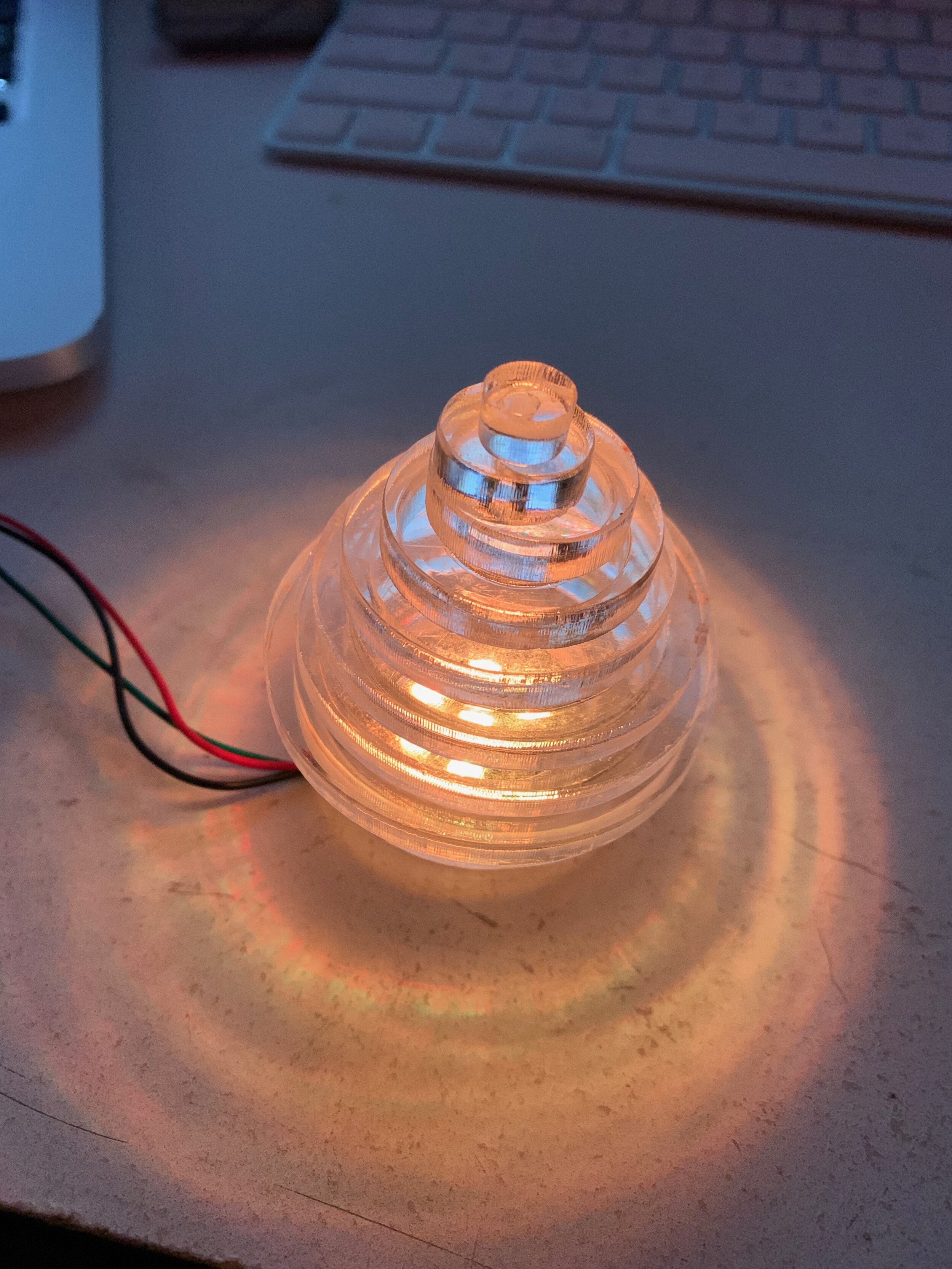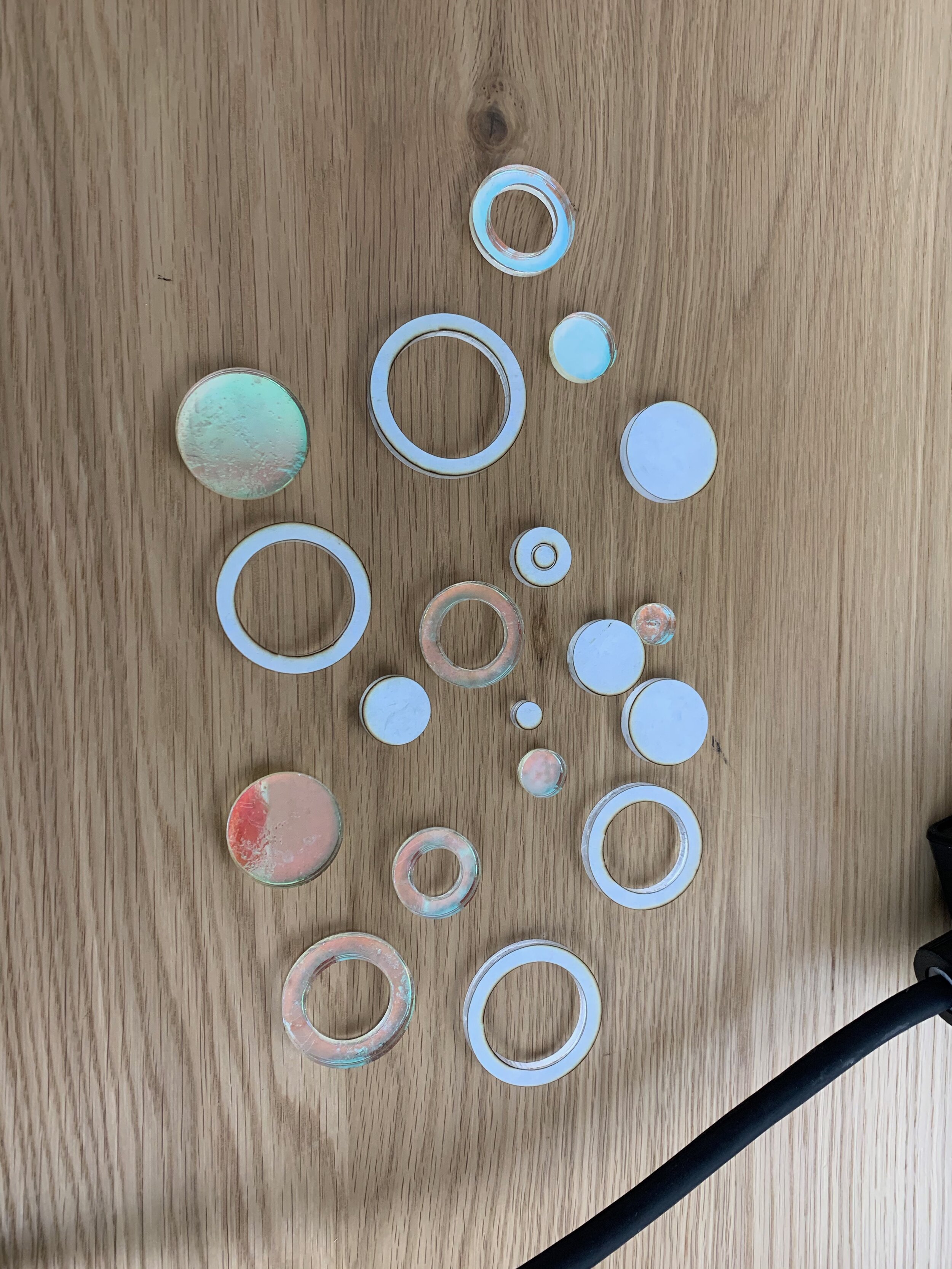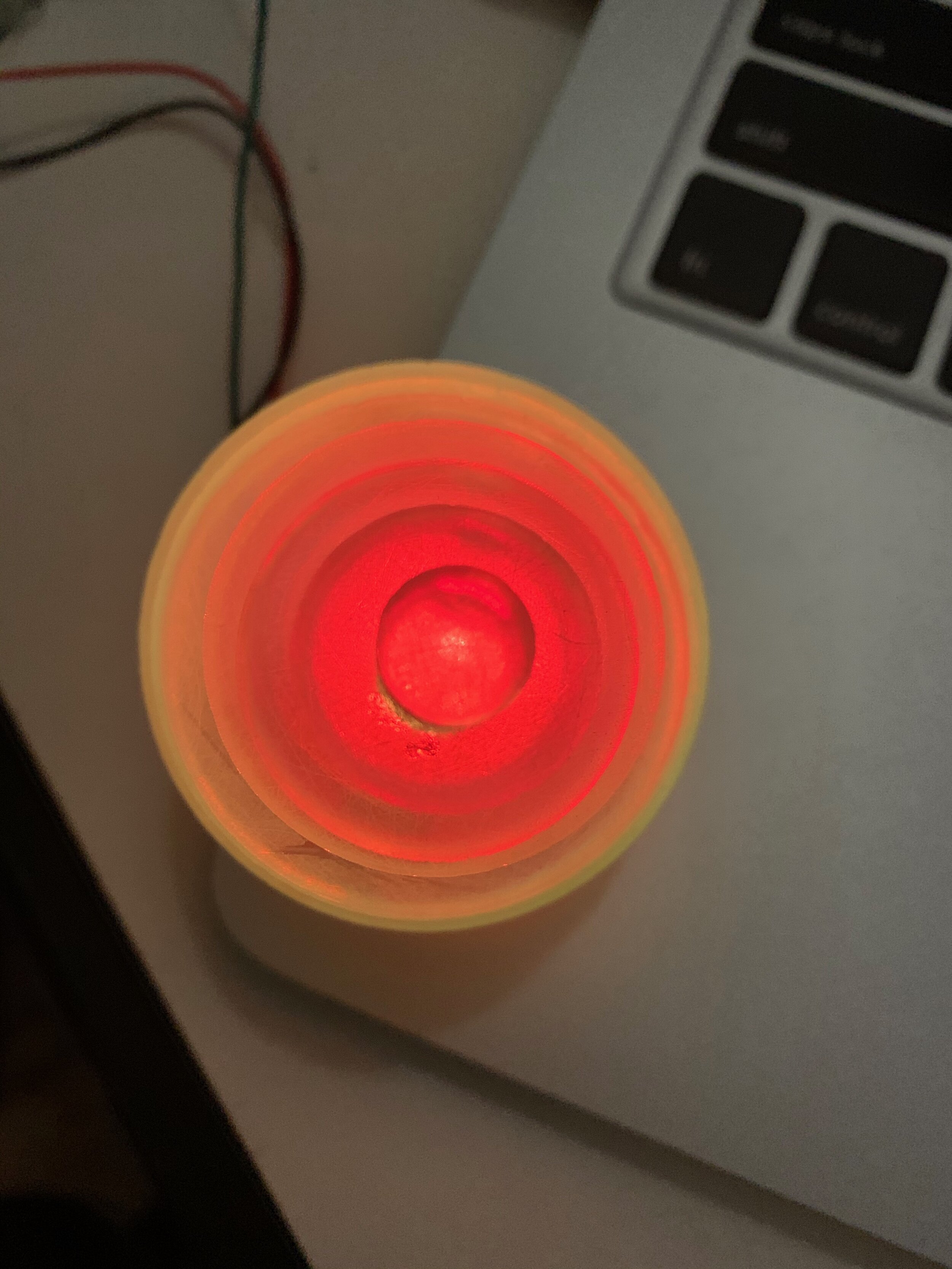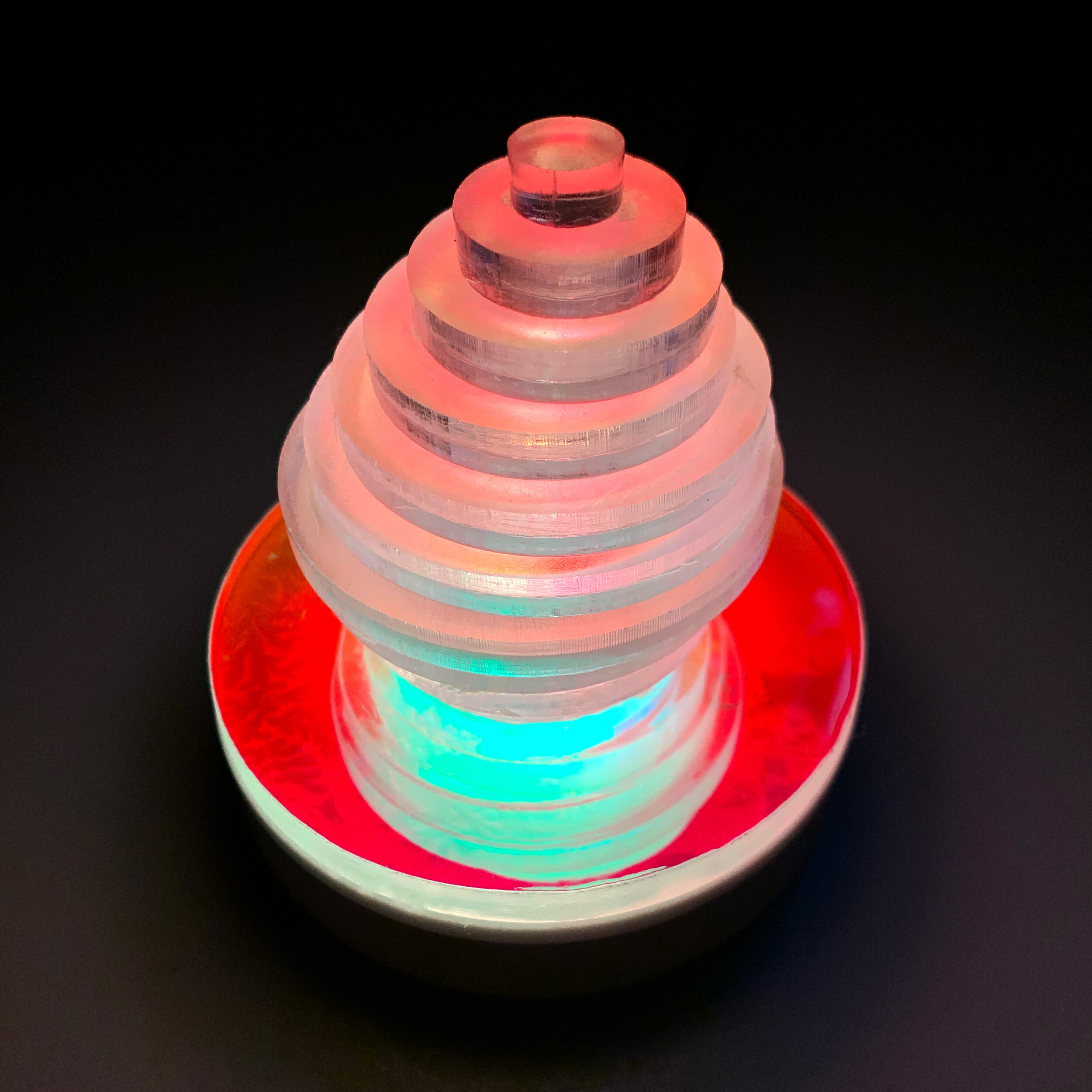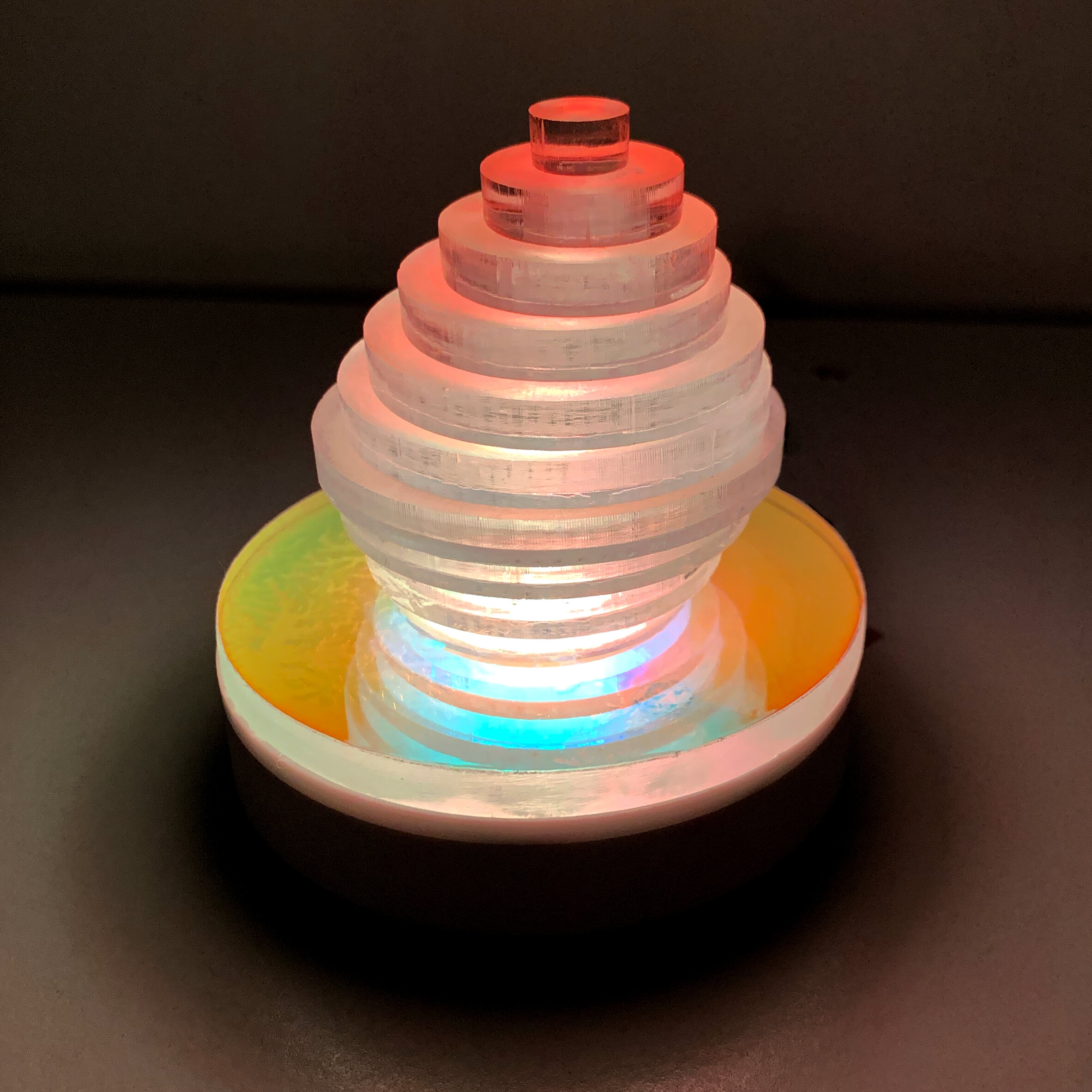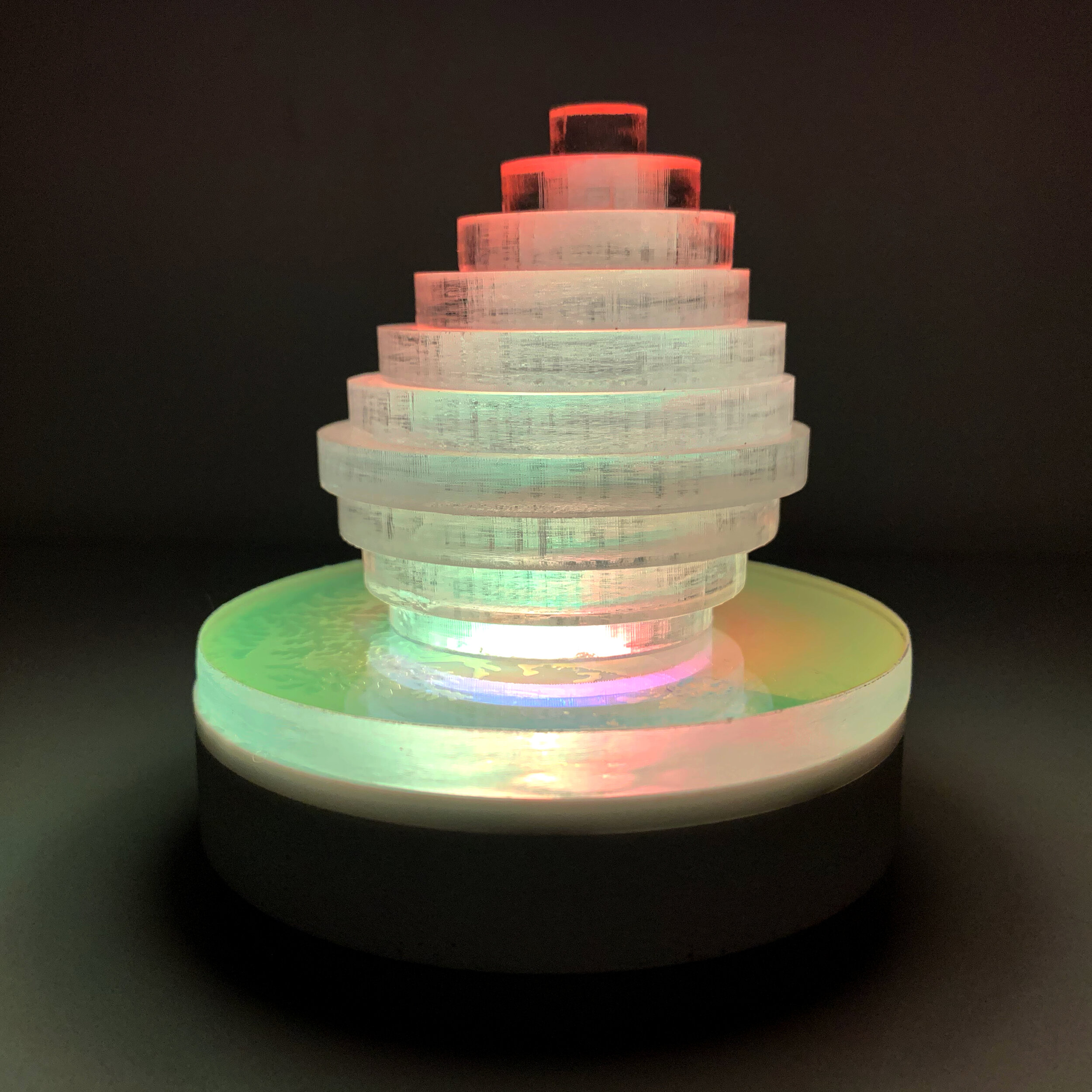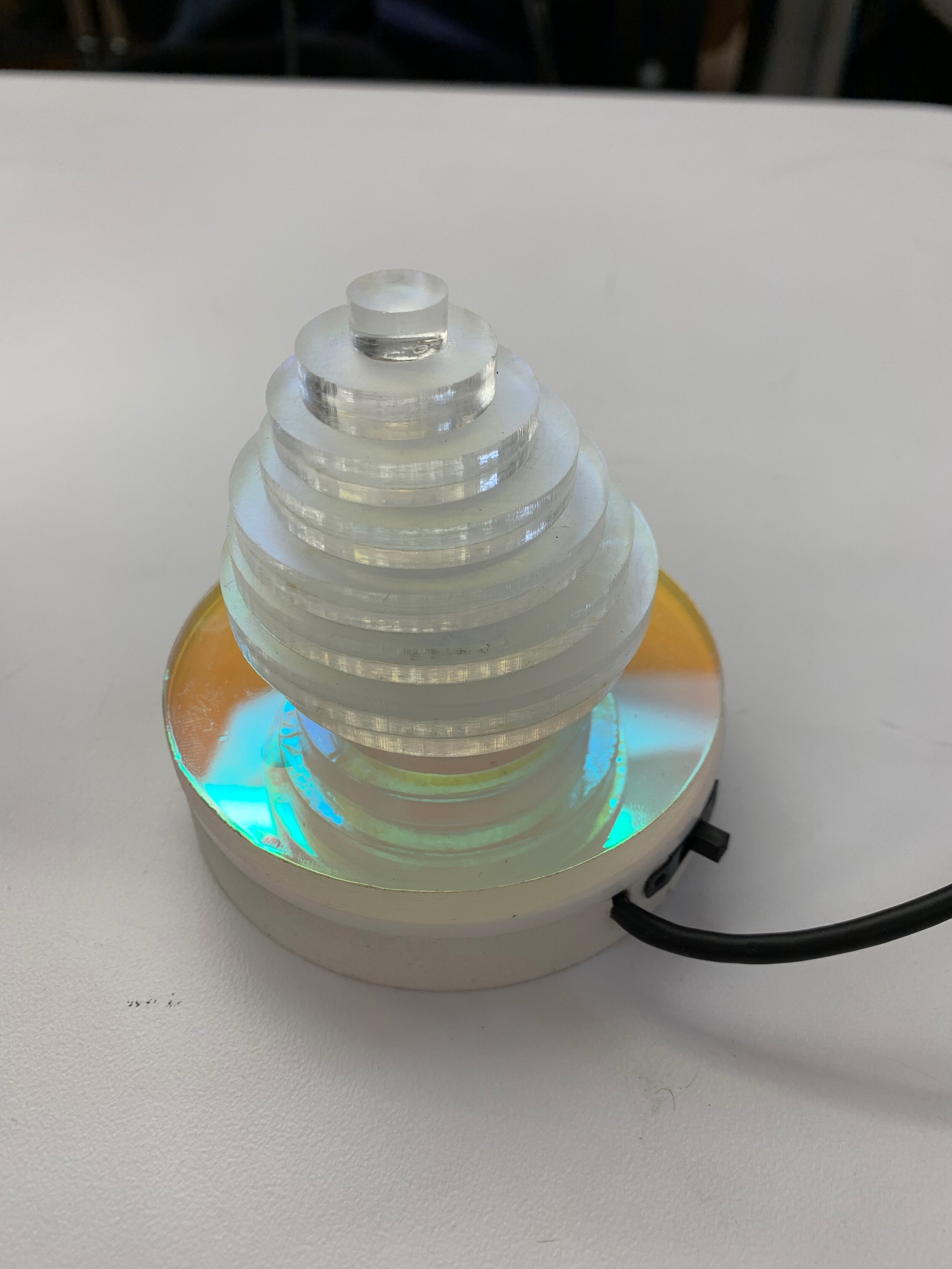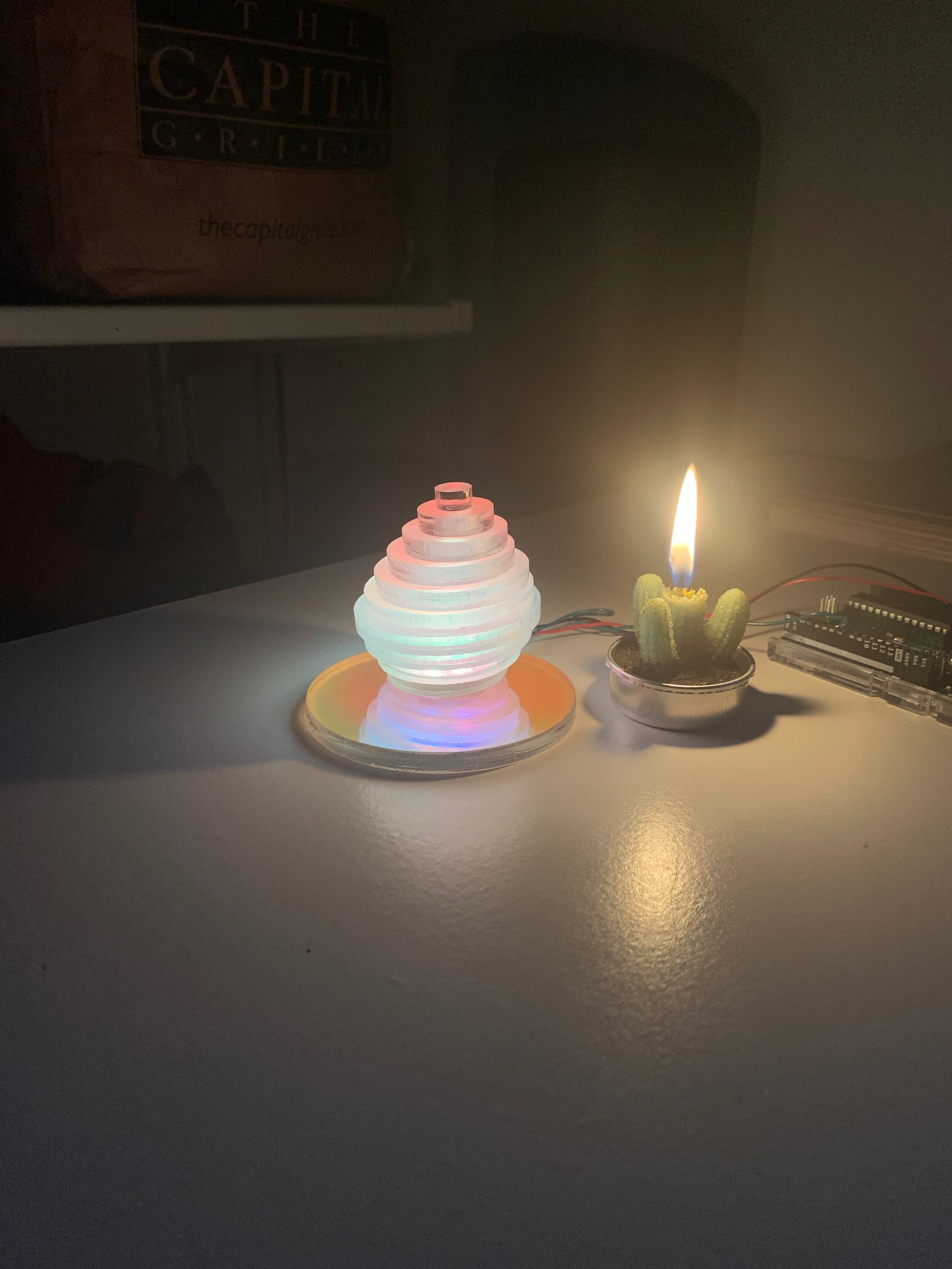For my final project I created a fixture I call Times Square Hue. It is a light that changes over the course of 24 hours based on live webcam data from Times Square sent through OBS as a virtual webcam into processing where it is thresholded, saturated, and then mapped to hue bulbs. The bulbs are enclosed within platonic solids made from dichroic film inside of lenticular lenses.
Below you can see the data being processed in real time. Each rectangle, scans across the image subsections gets mapped to one bulb. The resulting output in visible in the video to the right. You can see the code here
Here you can see the light changing with the webcam data in relation to the rest of my room. It is very difficult to capture because as the bulbs change the camera white balance is thrown off, forcing me to record the video at a very low brightness setting. In reality, the light can run at a much brighter setting illuminating most of my room in a comfortable warm, slightly pink light.
The platonic solids were generated with an online tool Templatemaker.nl. I apply dichroic film to plastic sheet then cut the vectors with the vinyl cutter. I did the same for the lenticular lens. Both materials were too strong to be cut through with the Cameo 4 but I was able to score the materials deeply enough to pull the pieces apart with my fingers.
Lenticular lens is a series of cylindrical lenses embedded in a substrate. The result is a magnifying effect in one plane. The normal use case is to embed multiple images together and create an animation effect as someone moves by the image. In my use case, and when the lens is far farther from the source, the lens stretches the light, in this case along the axis of the bulb height.
Dichroic filters selectively allow certain colors to pass through and reflect other colors. This effect is due to a phenomena called thin film interference; when light passes through a film, some waves are reflected by the film boundaries causing some wavelengths to be amplified and others to be cancelled out. In my use case, the colors projected onto the lenticular lens are determined by the interaction between the hue bulb color and the dichroic film. The resulting colors can only contain wavelengths that are present inside the hue bulb so there is a limit to the output colors. I tuned the processing sketch to output a range of hues (after the dichroic interaction) that I found to be pleasant.
Multiple images embedded behind a lenticular lens.






















